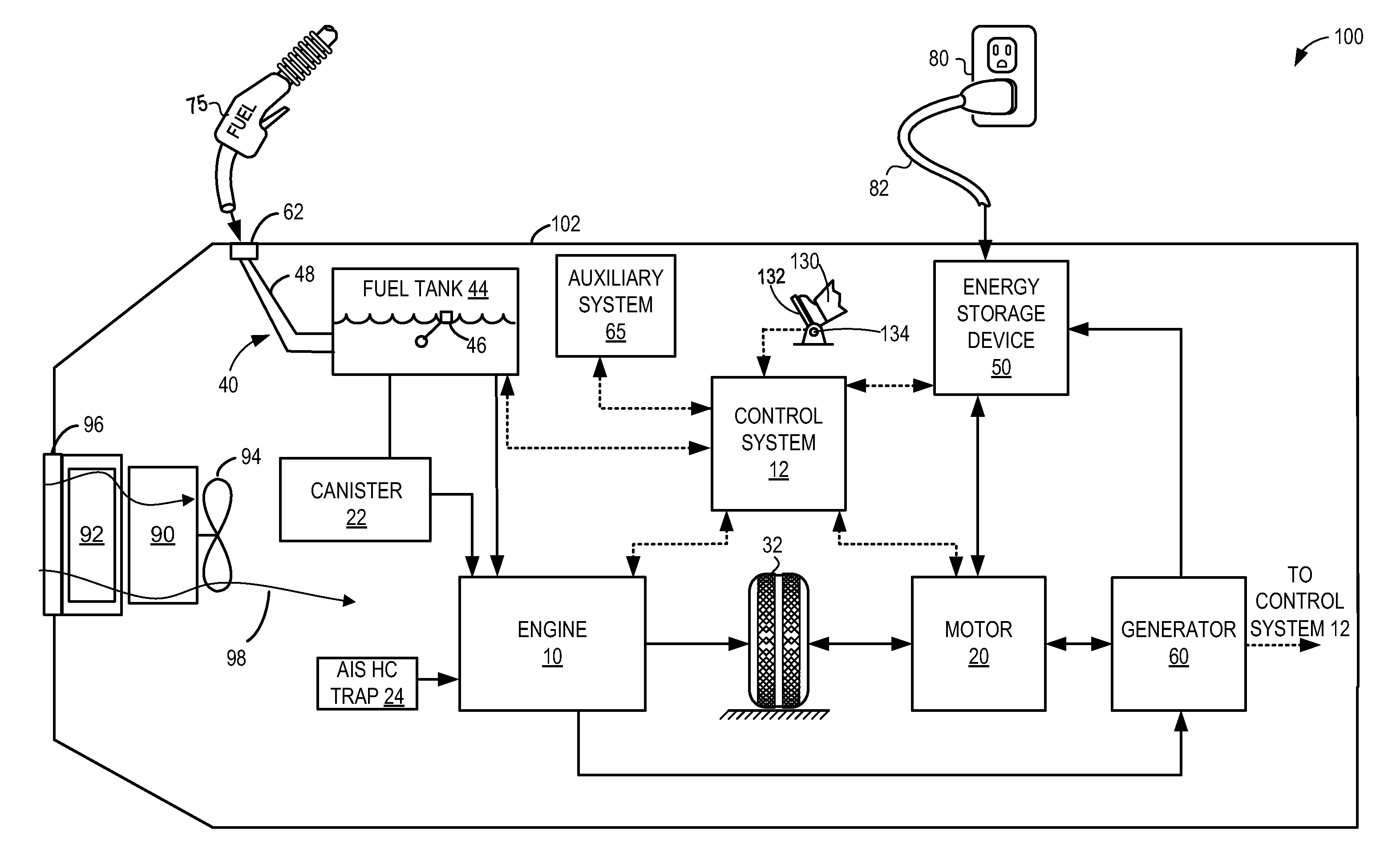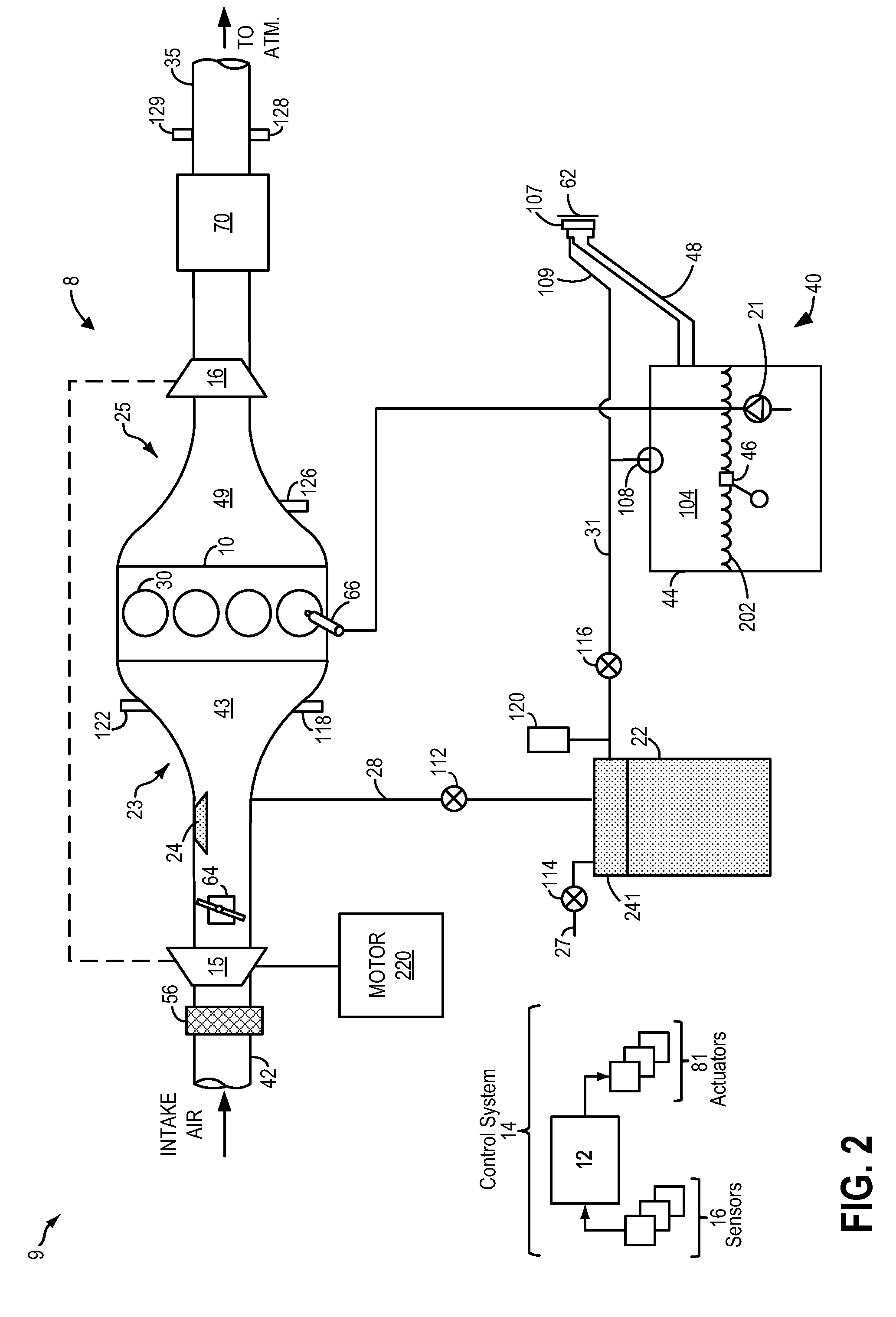Method for purging of air intake system hydrocarbon trap
a technology of hydrocarbon traps and air intake systems, applied in the direction of machines/engines, output power, electric control, etc., can solve the problems of fuel vapors, increase evaporative emissions, airflow across the trap, etc., and achieve the effect of increasing evaporative emissions
- Summary
- Abstract
- Description
- Claims
- Application Information
AI Technical Summary
Benefits of technology
Problems solved by technology
Method used
Image
Examples
Embodiment Construction
[0016]The following description relates to systems and methods for improving purging of a hydrocarbon (HC) trap situated in an engine intake, such as in the plug-in hybrid electric vehicle system of FIGS. 1 and 2. The HC trap is located within the air intake system (AIS) of an engine system, downstream of an intake throttle and upstream of the cylinders, as shown in FIG. 3. A controller may be configured to perform a routine, such as the example routine of FIG. 4, to open an intake throttle and canister purge valve (CPV), while closing cylinder valves (if not already closed) during vehicle travel in an electric-only mode to generate an airflow in the direction of the HC trap, allowing for improved desorption of fuel vapors from the HC trap. The controller can also perform a routine, such as that of FIG. 5, to purge the fuel system canister when the engine is operational. The CPV may be opened based on various vehicle operating conditions to expedite transfer of fuel vapors from the ...
PUM
 Login to View More
Login to View More Abstract
Description
Claims
Application Information
 Login to View More
Login to View More - R&D
- Intellectual Property
- Life Sciences
- Materials
- Tech Scout
- Unparalleled Data Quality
- Higher Quality Content
- 60% Fewer Hallucinations
Browse by: Latest US Patents, China's latest patents, Technical Efficacy Thesaurus, Application Domain, Technology Topic, Popular Technical Reports.
© 2025 PatSnap. All rights reserved.Legal|Privacy policy|Modern Slavery Act Transparency Statement|Sitemap|About US| Contact US: help@patsnap.com



